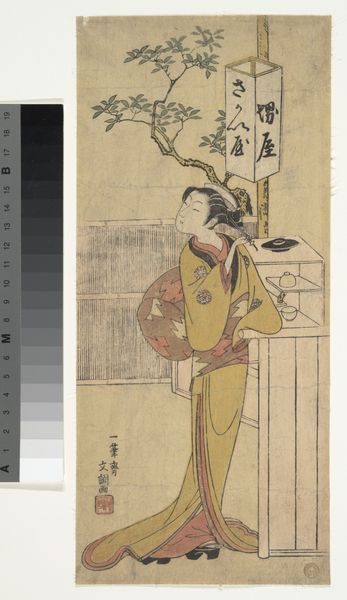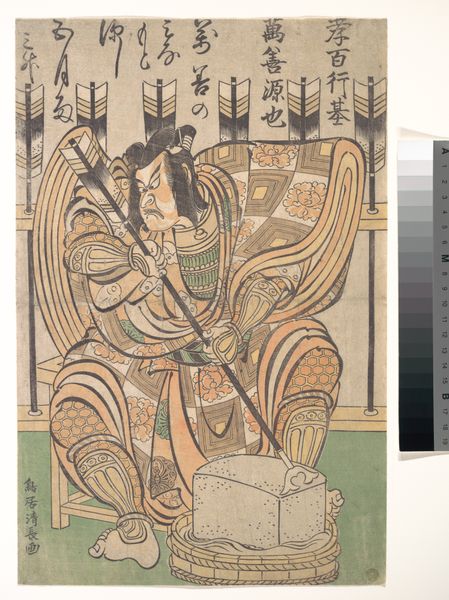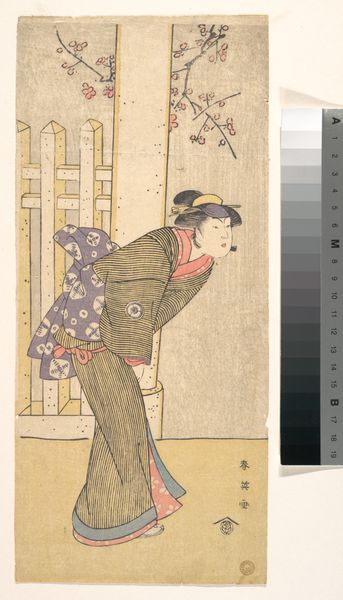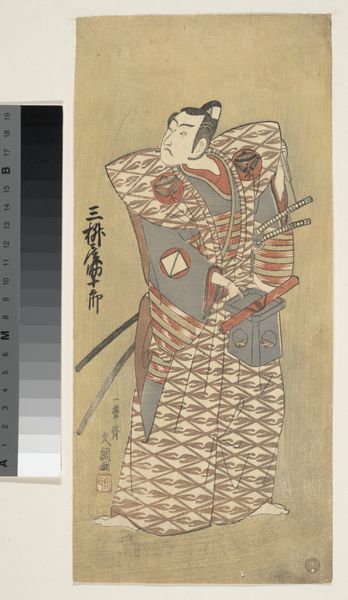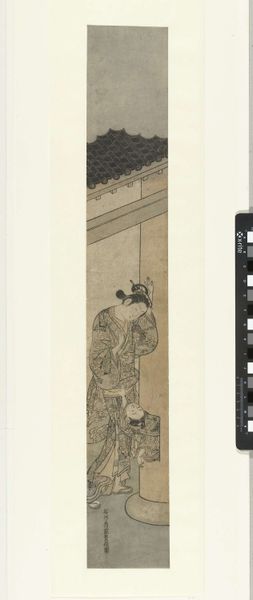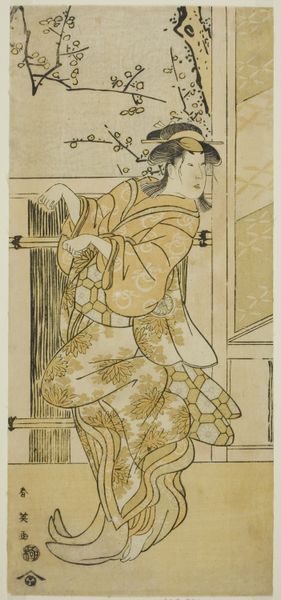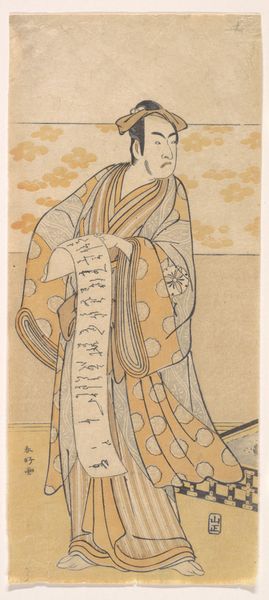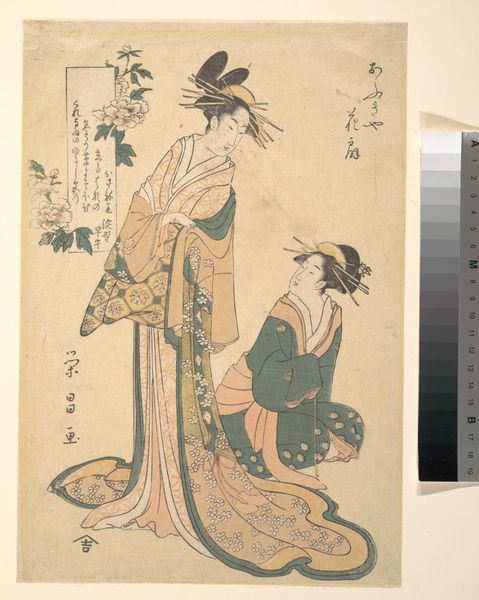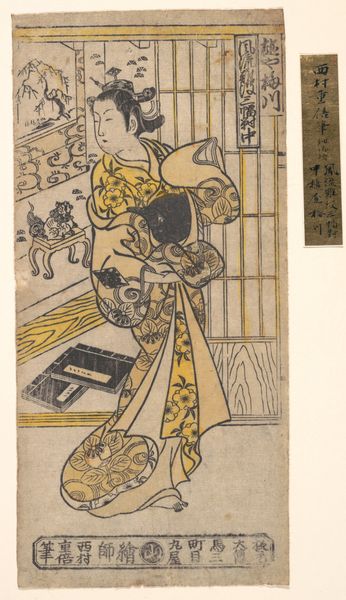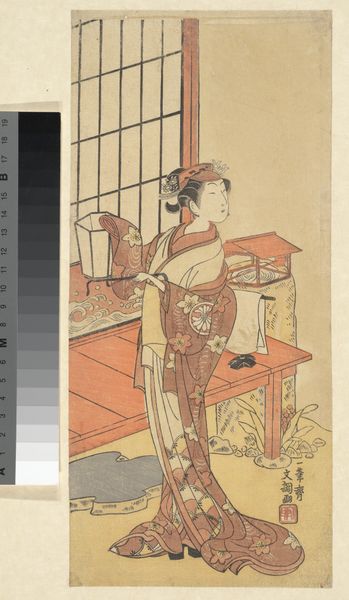
The Oiran Hanagiku Reading a Love Letter While Standing 1759 - 1779
0:00
0:00
print, woodblock-print
#
portrait
# print
#
asian-art
#
ukiyo-e
#
woodblock-print
#
genre-painting
Dimensions: 11 3/5 x 5 1/2 in. (29.5 x 14 cm)
Copyright: Public Domain
This woodblock print by Ippitsusai Bunchō, made in Japan around 1770, depicts the Oiran Hanagiku reading a love letter. Woodblock prints like this one were important visual tools for the floating world of Edo-period Japan. In this period, social mobility was limited, but this art allowed for fantasies of upward mobility and romantic possibilities. The Oiran, a high-ranking courtesan, became a figure of admiration and desire, challenging conventional morality. They occupied a liminal space between respectability and transgression, reflecting the fluid social dynamics of the time. Bunchō's work, like many ukiyo-e prints, was both art and commodity, consumed by a wide audience eager for glimpses into this glamorous world. Examining these prints, with their complex iconographies and cultural references, helps us understand how art shapes and reflects social values. To truly appreciate these images, we need to delve into the historical context, examining social and economic factors that shaped their production and reception.
Comments
No comments
Be the first to comment and join the conversation on the ultimate creative platform.

